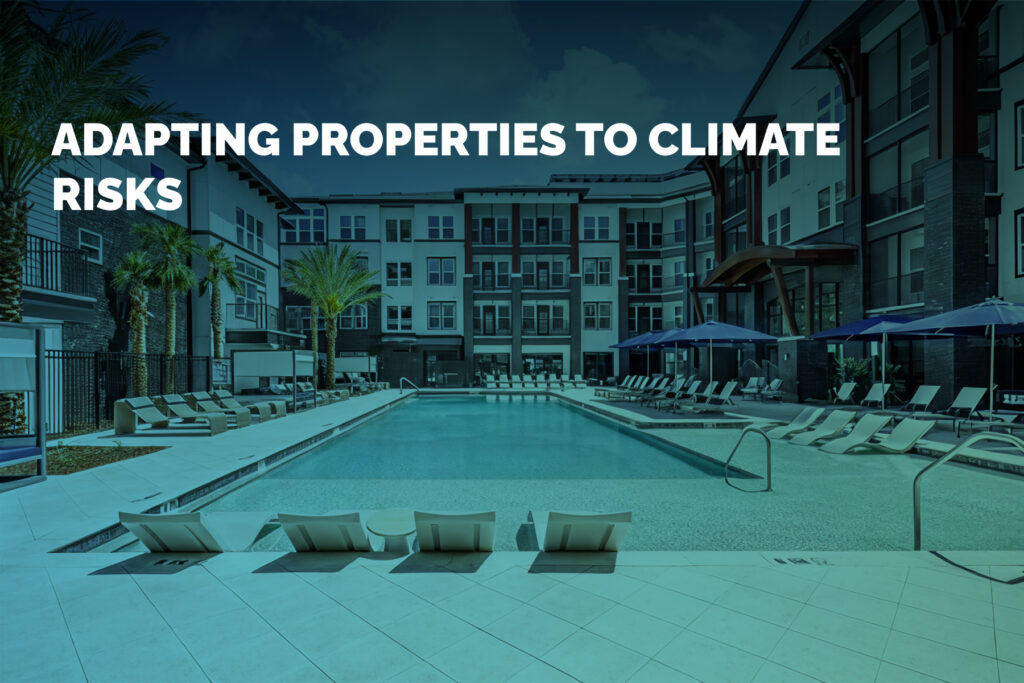From extreme heat waves and hurricanes to unexpected flooding and winter storms, climate-related risks are becoming an unavoidable part of property management. For both residents and owners, the key to long-term resilience lies in preparation, proactive planning, and smart investment in protective measures.
At Summerfield Property Management, we view climate readiness as a unavoidable consideration in preserving asset value and protecting annual returns.
1. Assess and Identify Local Climate Risks
Not every property faces the same climate challenges. Understanding your location’s unique vulnerabilities is the first step toward effective preparation. Examples of regional risks:
- Coastal properties: Hurricanes, storm surge, and flooding
- Northern climates: Heavy snowfall and frozen pipes
- Wildfire Regions: Air quality and evacuation planning
Pro Tip:
Conduct an annual risk assessment that accounts for changing weather patterns and regional forecasts to stay ahead of potential threats.
2. Strengthen Infrastructure and Building Systems
Preparation starts with the property itself. Investing in climate-resilient infrastructure prevents costly damage and downtime. Smart upgrades:
- Storm-resistant roofing and impact-rated windows
- Energy-efficient HVAC systems designed for heat resilience
- Flood barriers, sump pumps, and drainage improvements
- Backup generators to maintain power during outages
Best Practice:
Incorporate sustainable materials and green building standards whenever possible. These reduce long-term operating costs while boosting property resilience.
3. Develop and Train Emergency Response Plans
Even the best infrastructure needs people behind it. Climate-related emergencies require clear procedures and well-prepared teams. Things to consider:
- Site-specific emergency plans for hurricanes, wildfires, or blizzards
- Resident communication templates for alerts and updates
- Regular staff training on evacuation, safety, and disaster protocols
- Partnerships with local emergency services for rapid coordination
Confidence Boost:
Residents feel safer knowing management has a tested, practiced plan in place, rather than reacting on the fly.
4. Communicate Proactively with Residents
When disaster threatens, communication can make the difference between chaos and calm. Property managers must keep residents informed before, during, and after climate-related events. Resident-focused communication:
- Clear seasonal reminders (e.g., winter storm prep, hurricane kits)
- Emergency hotlines and text alert systems
- Post-event updates on property conditions and repair timelines
- Resident guides on how to prepare their units and belongings
Pro Insight:
Transparency builds trust. Residents are more likely to stay long-term when they know their management team is proactive and dependable.
5. Focus on Prevention and Long-Term Resilience
True climate preparedness goes beyond short-term fixes it’s about building resilience for the future. By combining data, technology, and foresight, property managers can minimize disruption and costs. Preventive moves:
• Install smart sensors for water leaks, air quality, and energy use
• Conduct seasonal inspections ahead of high-risk periods
• Integrate renewable energy sources and battery backups
• Plan capital improvements with climate adaptation in mind
Looking Ahead:
As climate models evolve, predictive analytics will help Owners anticipate risks and allocate resources more effectively.
Conclusion
Preparing for climate-related risks isn’t just about weathering the storm—it’s about ensuring resilience, reliability, and peace of mind. Because when residents trust their homes are safe and secure, they stay longer, feel more confident, and know they are part of a community prepared for the future.


